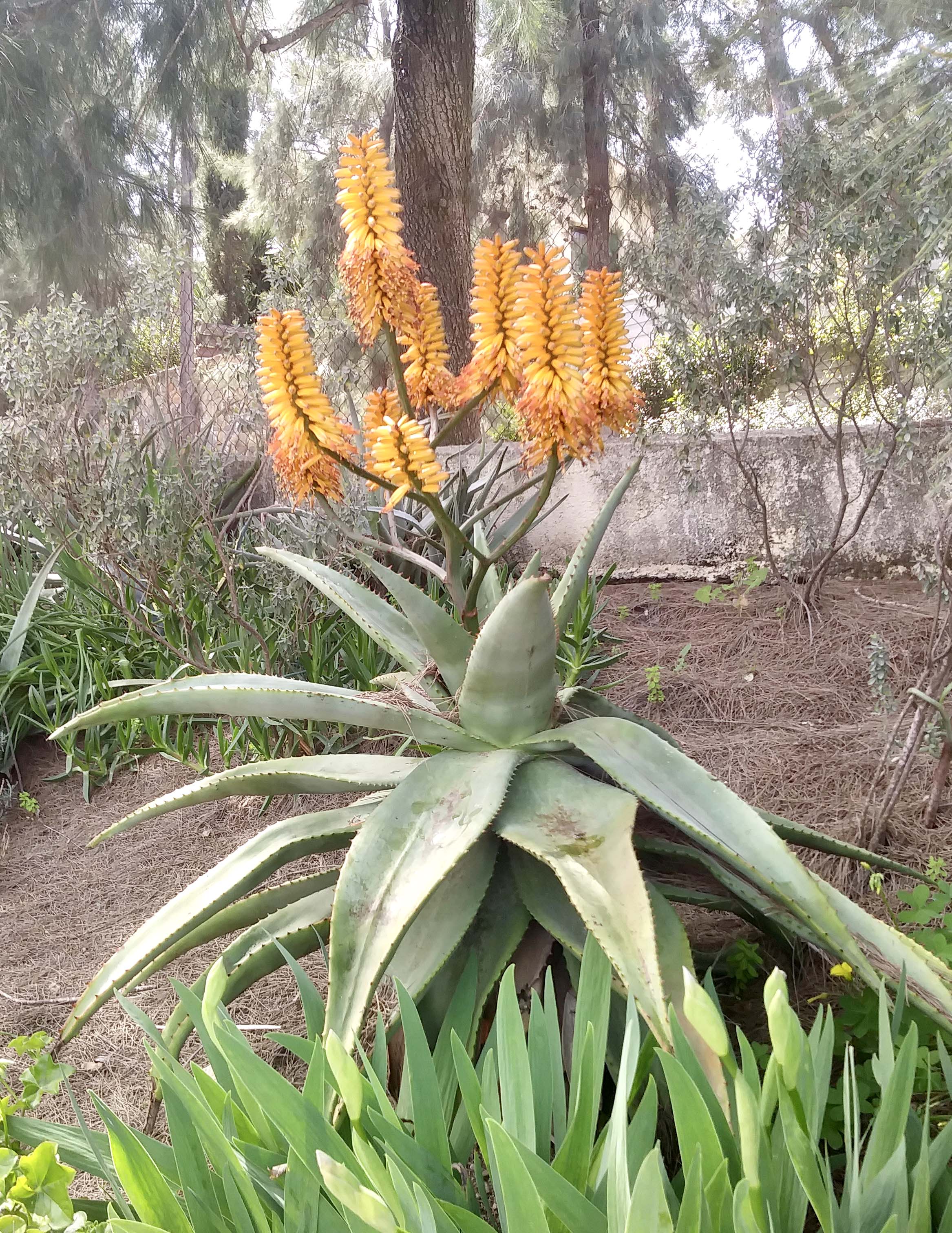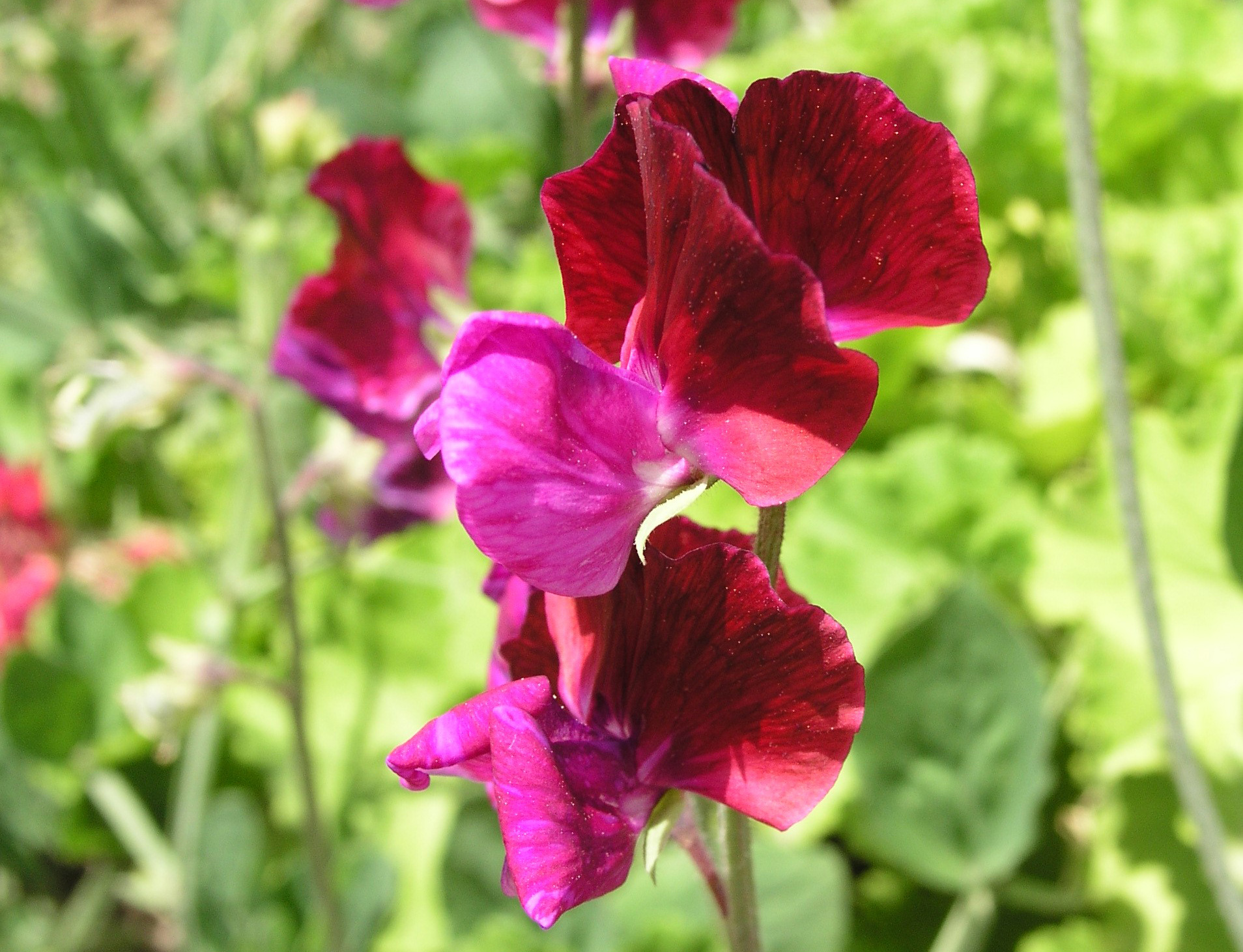As a prelude to spring, various plants begin to flower
Feeding fruit and nut trees is a priority this month. Spread three mugsful of 20.10.10 fertiliser around the root area of the trees and if there is no rain, water the fertiliser in. You probably have finished pruning your trees by now except those citrus trees whose branches may still be loaded with ripening fruits. As the month progresses, they will become heavier and may break the branches, so collect the fruits as they ripen and trim back any low branches.
It’s fun to squeeze the lemons and make Lemon Curd or freeze the juice for summer drinks. Not orange juice though, which is better drunk freshly squeezed, as it tends to separate out.
A reminder to keep your citrus trees to a manageable height, which saves having to climb ladders in order to collect the fruits – another hazard!

There are still other pruning jobs to do if and when the weather allows, as it can still be quite cold in some areas. If you didn’t manage to prune your bougainvilleas that enhance any plain walls or veranda railings, then hurry and get it done now. It can be slightly hazardous due to the vicious thorns along the branches, so take care.
Wisteria is another climber that can quickly outgrow its space, so trim it back and remove any seed pods to allow it to concentrate on making flowers.
A climbing shrub, Pyrostegia venusta, from South America, and perhaps better known as the ‘flame vine’ or ‘orange trumpet vine’ is in full flower now, and its bright orange tubular flowers brighten up the garden at this cold time of year.
Beware though, as it can quickly outgrow its space and I know of a house near me where the whole side of the house is covered with it. This might not be what you want, so keep it trimmed back, after flowering of course.
If you haven’t pruned your grapevine yet, then do so before the sap starts to rise when any pruning will cause the branches to ‘bleed’. Leafless grapevines look gaunt at this time of year but give you the opportunity to have a look at the basic structure and do some pruning.
Cut back the fruiting stems as they appear to one or two buds and pinch out all but the strongest new shoots. Sometimes they need some summer pruning as well.
Check over the support as well and see if there is need for any repairs or strengthening, as vines when fully in leaf and with fruit are very heavy creatures!
Some plants like Virginia creeper take a while longer to share their beauty with us. Most of the winter they are dormant and then spring comes along and the bright green leaves appear. As the summer progresses, they turn a lovely shade of red, which sees us through the autumn.
As the weather warms up you can sow seeds and take cuttings of perennial plants which are always useful for filling in gaps in your borders. Seeds may not germinate in cold soil, so you could bring the pots inside and start them off on the kitchen window sill. Annuals, though, are best sown where you want them to grow.
I have always admired Lathyrus odoratus right from a child when my mother used to sow the seeds in late October and they would survive the English winter.
Perhaps you know the story about how sweet peas were brought to mainland from Sicily in 1695 by a monk called Franciscus Cupani, who had collected them in the wild and had been growing them there.
There are two varieties of these highly perfumed delicate sweet peas available nowadays. Those with red and blue flowers are now known as ‘Matucana’, whilst the soft pink and white ones are known as ‘painted lady’. Sometimes you see them growing in old village gardens, so you might be able to beg a few seeds.

Some plants like osteospermums have many seeds which easily germinate, so if you don’t want lots of plants remove them before they get too big! They do make good ground cover though, as do Oenothera speciosa, those pretty ‘front of border’ plants, originally from the southern states of America and Mexico.
They are commonly known as the ‘Mexican evening primrose’ and their pretty pink scented flowers draw much attention from visitors. Although they go by this common name, they do flower during the day as well. Pot up any cuttings of these pretty plants as visitors are sure to beg some.
You will attract many bees if you grow bulbinellas and bulbines. They can become rather invasive but encourage both bees and butterflies to your garden and if the clumps become too big, you can always reduce them in size after they have flowered.
Other flowers appearing are the yellow flower stems of Aloe vera, such a useful plant to have growing the garden, whilst another aloe, known as the ‘candelabra Aloe’ is thrusting up its many branched stems of orange flowers.
There are so many jobs to do at this time of year you will not be bored! Take off any tired leaves of Canna lilies but be careful that you don’t cut into any emerging flower stems tucked away inside.
There are many more varieties available these days, when not long ago there were only the bright red ones, still seen in many village gardens here. They have proved their worth, but there many more colours available these days, including a very prettily leaved one called ‘Durban’, which has huge orange flowers and grows well here.
Lavenders are such good value and there are many varieties available, but my favourite is Lavender stoechas. Also known as the French or Spanish lavender, it is very hardy and can be found growing in the wild here.
As a native of the Mediterranean, it can withstand our very hot summer weather. A factor which helps with that is the narrow-felted leaves, which can help disperse the heat of a hot summer’s day.
Another favourite at this time of year is the little cyclamen, also a native of this island. Its pretty dark green leaves, which are beautifully marked with silver, are a foil for the lovely little flower heads, which rise above them at this time of year.
I keep finding new clumps and I know that when the seed pods burst open, ants collect the seeds and drop them into new places. Well done the ants and what a bonus!
Plant of the Month – Photinia ‘Red Robin’
This colourful shrub or small tree lights up the garden at this time of year with its flaming red new leaves. Bred in New Zealand, where it is used extensively for shelter belts and hedging, it grows well in Cyprus too, although relatively short lived I have found – around 4 or 5 years. It may be that it finds our summers too hot, preferring to grow in a more shaded spot, as the leaves can be burned if there is too much sun.
Advice is not to plant it in the summer months as it will require a lot of watering. It is not suitable for gardens that are at high elevations and liable to have frost in the winter or early springtime. It can usually cope in sheltered or exposed conditions, however, due to the potential for frost damage, it can be best to plant this Photinia in a relatively sheltered spot.
This striking evergreen shrub, sometimes also grown as a tree up to around 5 metres, is a crossing between Photinia glabra and Photinia serrulate. It is such a delight in your garden.
The leaves are leathery and oval-shaped, with a slightly serrated edge. This gives an attractive texture to the tree. ‘Red Robin’ produces small clusters of white flowers in late spring and these delicate blooms are followed by small red fruits, adding further visual interest.
This is a useful and low-maintenance ornamental shrub which will look well in a garden border. It will grow best in full sun or partial shade, but in fact, it can survive in a bed with any aspect in your garden – be it south, east, west or north-facing – as long as it is not in deep shade. So, while it will grow well against a garden boundary fence or wall, it should not be hemmed into a corner, or have planting around it which is too dense.
If you do plant in summer – take note that your Photinia will require a lot of watering over the first few months until it becomes established.
It needs a fertile, humus-rich type of soil – clay, loam or sand. One last thing to note is that ‘Red Robin’ needs good air circulation to avoid diseases.







Click here to change your cookie preferences